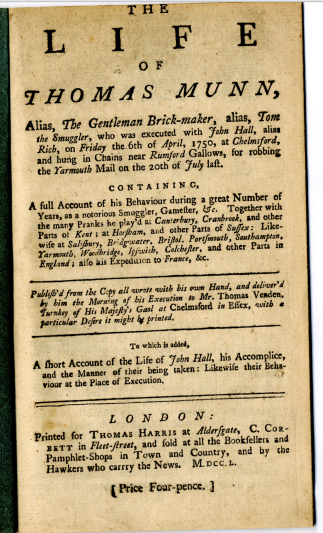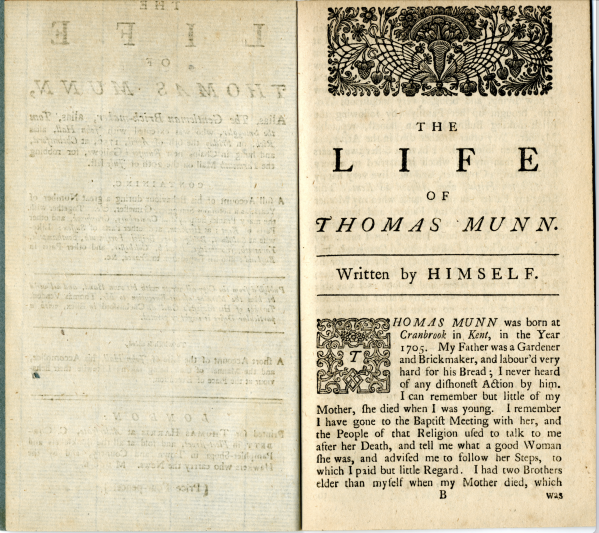Jeremy Knight, Curator, writes: Horsham Museum and Art Gallery has an archive of legal manuscripts dealing with criminal cases in the 18th and early 19th centuries at the Town courts and County Assizes. This rare chapbook publication (four are held in libraries worldwide), a “deathbed” confession of a highwayman and robber appealed to the Museum as it gave voice to a criminal whose activities occurred in Horsham. However, Thomas Munn’s reflective and self-aware account provided a much richer tale which had a number of links to the town and Museum’s collections, including brick making, Morris dancing, town solicitors, poaching, and rabbit breeding, all important aspects of the town and districts cultural life in the 18th century.
Thomas was born in Kent in 1705 to a brickmaking family; this was a newly flourishing industry as houses were being upgraded from wood to brick. Munn had “trudged” to Horsham to meet up with fellow brickmaker Ned Langley. Having left behind an unhappy “mistress” Ned had “got a Wife” for him. This potential wife was a 70-year-old widow worth £1,300 to £1400. Munn describes in the woman is his account as follows, “I instantly observed the poor old Soul could not bite me, because she had ne’er a Tooth in her Head, which made her kiss might soft”. However, a local solicitor also wanted to marry her and as Munn outlines, the solicitor visited the widow on the pretext of borrowing £20. She then “daddled up Staires with him, and seem’d to be long enough there to have tried a Cause”. As a result of this visit Munn gave up his suit and the Solicitor, who loved money more than the widow, married her according to the booklet, “it was a very unhappy Match.”
Though Thomas was a brickmaker and Horsham had some 18th century brickmaking sites, this is the earliest known mention of a brickmaker in the town. Unfortunately, we do not know where Ned Langley worked. The account goes into the practices of the time, such as making bricks during the summer and then finding other employment in the winter months. Ned worked in St Leonard’s Forest, protecting the rabbit warrens from poachers. Thomas didn’t like the work, finding it too cold and too dangerous lying in the forest at night “coney-catching”, so he learnt to play the flute and to dance and went into Sussex to become a dancing master. He “got a set of Young Fellows as undiscerning as myself… to go with me Morris-dancing, as it is called in that County”. This is one of the earliest references to the pastime. However, some three years later after leaving Sussex Thomas was back in the area, making bricks at Henfield, a village some seven miles from Horsham. He then turned to crime.
What attracted the national and international press was the gay seduction that almost took place in Southampton, between Thomas Munn and the publican’s son.
The Friends of the National Libraries awarded the Museum a full grant to buy this important account with Justin Croft, the dealer who found the booklet in an American auction, giving a discount on the price.

